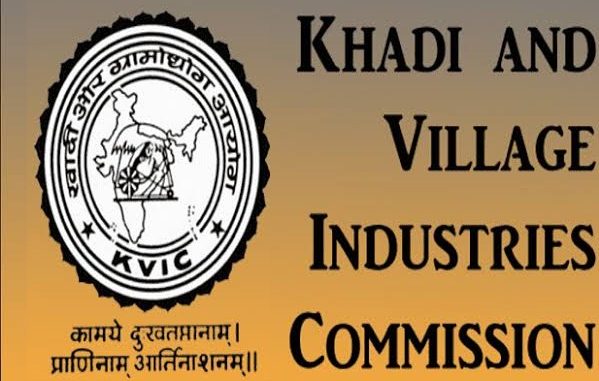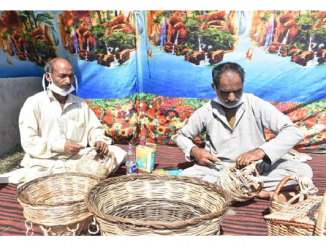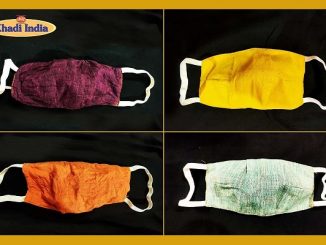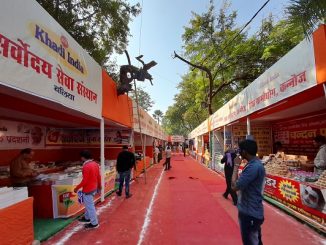
Feb 27: Khadi and Village Industries Commission (KVIC) has urged Government to lift the “export prohibition” on bamboo charcoal for optimum utilization of raw bamboo and higher profitability in the bamboo industry. One of the biggest challenges that the Indian bamboo industry faces today is the extremely high input cost owing to inadequate utilization of bamboo. However, export of bamboo charcoal would ensure complete utilization of the bamboo waste and thus make the bamboo business more profitable.
KVIC Chairman Shri Vinai Kumar Saxena has written to Union Minister of Commerce and Industries, Shri Piyush Goyal, seeking to lift the export restriction on bamboo charcoal for larger benefit of the bamboo industry.
In India, bamboo is mostly used in manufacturing of Agarbatti wherein, a maximum of 16%, i.e. the upper layers of the bamboo, is used for manufacturing of bamboo sticks while the remaining 84% of bamboo is a complete waste. The Bamboo waste generated in Agarbatti and bamboo craft industries is not being utilized commercially, as a result, the Bamboo input cost for Round Bamboo Sticks is in the range of Rs 25,000 to Rs 40,000 per MT as against the average Bamboo cost of Rs 4,000 to Rs 5,000 per MT. Compared to this, the Bamboo price in China is Rs 8,000 to Rs 10,000 per MT but their input cost is Rs 12,000 to Rs 15,000 per MT owing to 100% waste utilization.
KVIC Chairman Shri Saxena said the bamboo waste can be best utilized by making “Bamboo Charcoal” which, though, has a very limited use within the domestic market but it is hugely in demand in the international market. However, the Indian bamboo industry is not able to tap the opportunity due to its “export prohibition”. Considering the repeated requests of the industry, KVIC has requested the government to consider lifting the export restriction on bamboo charcoal. He said this would not only enable the industry to exploit huge global demand but also enhance the profitability of existing KVIC units by proper utilisation of bamboo waste and thus contribute to the PM’s vision of “Waste to Wealth.
Notably, the world import demand of bamboo charcoal has been hovering in the range of USD 1.5 to 2 billion and has been growing at the rate of 6% in recent years. Bamboo Charcoal for Barbeque sells for about Rs 21,000 to Rs 25,000 per ton in the international market. Besides, it is also used for soil nutrition and as a raw material for manufacturing Activated Charcoal. Rising import demand is witnessed in countries like USA, Japan, Korea, Belgium, Germany, Italy, France and UK at negligible import duty.
It is pertinent to mention that an amendment in export policy for Bamboo products under the HS code 141100 was made in 2017, wherein exports of all the Bamboo products were kept in the OGL category and were “Free” to exports. However, exports of Bamboo Charcoal, Bamboo Pulp and unprocessed shoots were still kept under prohibited category.
Earlier, in order to create more employment in bamboo-based industries, particularly in Agarbatti industry, KVIC, in 2019, had requested the Government for policy changes in import of raw Agarbatti and import duty on round bamboo sticks that were heavily imported from Vietnam and China. Subsequently, in September 2019, the Ministry of Commerce “restricted” the import of raw Agarbatti and in June 2020, the Ministry of Finance increased the import duty on round bamboo sticks.
As an implication of the policy changes, Agarbatti and bamboo-craft industries in India have witnessed the revival of hundreds of closed units. After the policy changes, KVIC has set up 1658 new Agarbatti manufacturing units under its flagship Prime Minister’s Employment Generation Program (PMEGP). Similarly, 1121 new bamboo crafts related units, too, have been set up across the country. This has not only optimized the use of bamboo but also created sustainable employment in rural areas.
Disclaimer: We donot claim that the images used as part of the news published are always owned by us. From time to time, we use images sourced as part of news or any related images or representations. Kindly take a look at our image usage policy on how we select the image that are used as part of the news.


